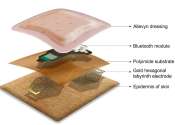3D printed, bioinspired heart valves: Scaffolds created by melt electrowriting aim to support new tissue formation
Researchers have developed 3D printed artificial heart valves designed to allow a patient's own cells to form new tissue. To form these scaffolds using melt electrowriting—an advanced additive manufacturing technique—the ...
Jun 2, 2022
0
328









